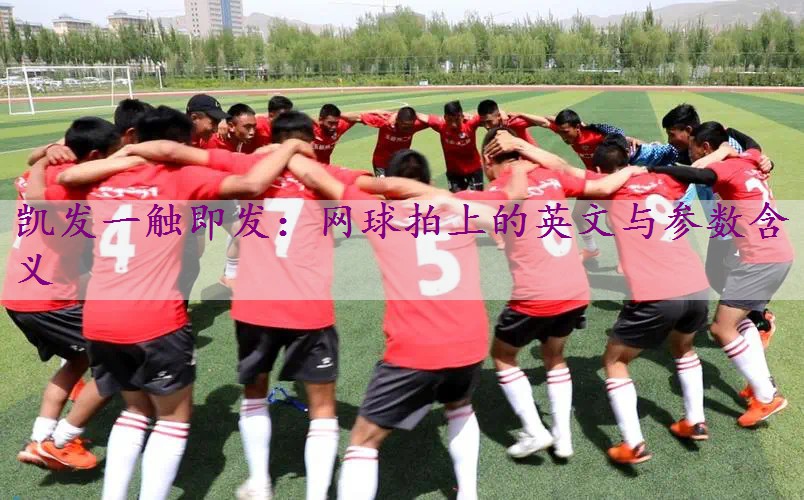凯发一触即发:网球拍上的英文与参数含义
Introduction
Tennis is a popular sport enjoyed by millions of people around the world. It is a sport that requires skill, speed, and agility. One of the most important pieces of equipment in tennis is the tennis racket. The tennis racket has evolved over the years, and today, there are many different types of rackets available on the market. Each racket has its own unique set of specifications and features that make it suitable for different types of players and playing styles. In this article, we will explore the English terms and parameters associated with tennis rackets.
Frame

The frame of a tennis racket is the main body of the racket. It is the part of the racket that is used to strike the ball. The frame is made up of several components, including the head, throat, shaft, and handle. The head of the racket is the part of the frame that is used to strike the ball. The throat is the part of the frame that connects the head to the shaft. The shaft is the long, narrow part of the frame that connects the handle to the head. The handle is the part of the frame that the player grips.
Head Size
The head size of a tennis racket refers to the size of the head of the racket. The head size is measured in square inches and is one of the most important parameters to consider when choosing a racket. A larger head size provides a larger sweet spot, which makes it easier to hit the ball. However, a larger head size also means that the racket is heavier and less maneuverable. A smaller head size provides a smaller sweet spot, which makes it more difficult to hit the ball. However, a smaller head size also means that the racket is lighter and more maneuverable.
Weight
The weight of a tennis racket is another important parameter to consider when choosing a racket. The weight of a racket is measured in ounces and can range from 8 ounces to 14 ounces. A lighter racket is easier to maneuver and is suitable for players who prefer a faster swing凯发k8. A heavier racket provides more power and stability and is suitable for players who prefer a slower swing.
Balance Point
The balance point of a tennis racket is the point at which the weight of the racket is evenly distributed. The balance point is measured in millimeters from the butt of the handle. A racket with a balance point closer to the head is called a head-heavy racket, while a racket with a balance point closer to the handle is called a head-light racket. A head-heavy racket provides more power and stability, while a head-light racket provides more maneuverability.
String Pattern
The string pattern of a tennis racket refers to the number of strings and the pattern in which they are strung. The string pattern is measured in the number of main strings and cross strings. A racket with a dense string pattern (more strings) provides more control and spin, while a racket with an open string pattern (fewer strings) provides more power and a larger sweet spot.
Stiffness
The stiffness of a tennis racket refers to the amount of flex in the frame. The stiffness is measured on a scale from 0 to 100, with 0 being the most flexible and 100 being the least flexible. A more flexible racket provides more power and comfort, while a stiffer racket provides more control and accuracy.凯发k8国际首页登录
Grip Size
The grip size of a tennis racket refers to the circumference of the handle. The grip size is measured in inches and can range from 4 inches to 4 5/8 inches. A smaller grip size provides more control and feel, while a larger grip size provides more comfort and less feel.
Conclusion
In conclusion, the English terms and parameters associated with tennis rackets are important to understand when choosing a racket. Each parameter has its own unique set of advantages and disadvantages, and it is important to consider these factors when selecting a racket that is suitable for your playing style and skill level. By understanding the various parameters associated with tennis rackets, you can make an informed decision and choose a racket that will help you improve your game and enjoy the sport of tennis.
